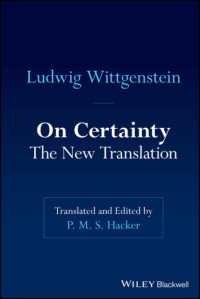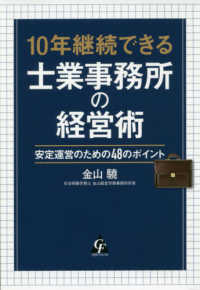- ホーム
- > 洋書
- > 英文書
- > History / World
Full Description
Although lowland Britain in 300 CE had been as Roman as any province in the empire, in the generations on either side of 400, urban life, the money economy, and the functioning state collapsed. Many of the most quotidian and fundamental elements of Roman-style material culture ceased to be manufactured. Skills related to iron and copper smelting, wooden board and plank making, stone quarrying, commercial butchery, horticulture, and tanning largely disappeared, as did the knowledge standing behind the production of wheel-thrown, kiln-fired pottery and building in stone. No other period in Britain's prehistory or history witnessed the loss of so many classes of once-common skills and objects. While the reasons for this breakdown remain unclear, it is indisputable the collapse was foundational in the making of a new world we characterize as early medieval.
The standard explanation for the emergence of the new-style material culture found in lowland Britain by the last quarter of the fifth century is that foreign objects were brought in by "Anglo-Saxon" settlers. Marshalling a wealth of archaeological evidence, Robin Fleming argues instead that not only Continental immigrants, but also the people whose ancestors had long lived in Britain built this new material world together from the ashes of the old, forging an identity that their descendants would eventually come to think of as English. As with most identities, she cautions, this was one rooted in neither birth nor blood, but historically constructed, and advanced and maintained over the generations by the shared material culture and practices that developed during and after Rome's withdrawal from Britain.
Contents
Contents
Introduction. Down a Rabbit Hole?
Chapter 1. The World the Annona Made
Chapter 2. The Rise and Fall of Plants, Animals, and Places
Chapter 3. Why Pots Matter
Chapter 4. The Afterlife of Roman Ceramic and Glass Vessels
Chapter 5. Pragmatic, Symbolic, and Ritual Use of Roman Brick and Quarried Stone
Chapter 6. Metal Production Under and After Rome
Chapter 7. Living with Little Corpses
Chapter 8. Who Was Buried in Early Anglo-Saxon Cemeteries?
Chapter 9. The Great Disentanglement
Notes
Index
Acknowledgments







